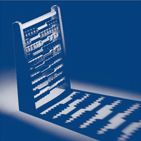Tax Efficient Exits
Following the changes announced to the taxation of dividends with effect from April 2016, we thought it may be helpful to explain alternative ways of extracting funds from a company, such as a company purchase of own shares out of capital reserves.
Background
Individual company shareholders seek to leave the company and sell their shares for a number of reasons – to realise capital gains, extract value from the company, retirement or a falling out with their fellow shareholders. In unquoted companies the most obvious purchasers are the remaining shareholders of the company. Once a price is agreed with the departing shareholder, the remaining shareholders will have to have sufficient funds available to complete the transaction or alternatively seek new investment from outside the company, which may not be desirable, easy or cheap to do.
Funding the purchase
If the remaining shareholders don’t have sufficient funds and prefer to avoid outside investment then dividends may be declared from the company in order to fund the share purchase, assuming the company has sufficient capital and cash reserves. This approach has a number of drawbacks, not least that if the company has only one class of shares entitled to a dividend then the departing shareholder will also participate in the dividend.
The other main drawback is that Income Tax rates will be paid on the dividend. If the shareholder is already a higher rate Income Tax payer, then additional Income Tax will be charged at 25% or 30.56% (for 2015/16 tax year) of the further dividend. Therefore, the dividend may have to be grossed up to include the Income Tax due before the share purchase can be completed.
Tax Efficient Alternative
As an alternative, the company may be able to purchase the shares from the departing shareholder. This is usually more tax efficient as it bypasses the need to issue a dividend and incurring further Income Tax.
Before the company can purchase the shares there are a number of conditions to be fulfilled. One of the main conditions is the connection test – the transaction must be part of the shareholder withdrawing from the company. If the departing shareholder only disposes of a fraction from a majority (over 50%) shareholding holding, then the test will not be satisfied. The test includes the departing shareholders associates therefore the test is not satisfied if the remaining shareholder is their spouse.
If the company notifies HM Revenue & Customs (“HMRC”), then the departing shareholder may be subject to Capital Gains Tax on the disposal of their shareholding in the usual way. If the company is a trading company then the gain may be taxed at the Entrepreneurs Relief rate of 10%, otherwise it will be taxed at 18% or 28%. If clearance from HMRC is not applied for then Income Tax rates might apply to the distribution.
How we can help
We can advise how a company purchase of own shares might apply, whether the conditions are fulfilled and seek clearance from HMRC on your behalf. If you don’t already have a solicitor then we can introduce one to you to effect the share purchase.
This is a broad summary of a complex topic. If you have any questions about a company purchase of own shares, exit strategies or tax liabilities in general then please contact our Tax Director, Jenny Marks.
To see our other news items please visit our Muras Baker Jones – Blog.



